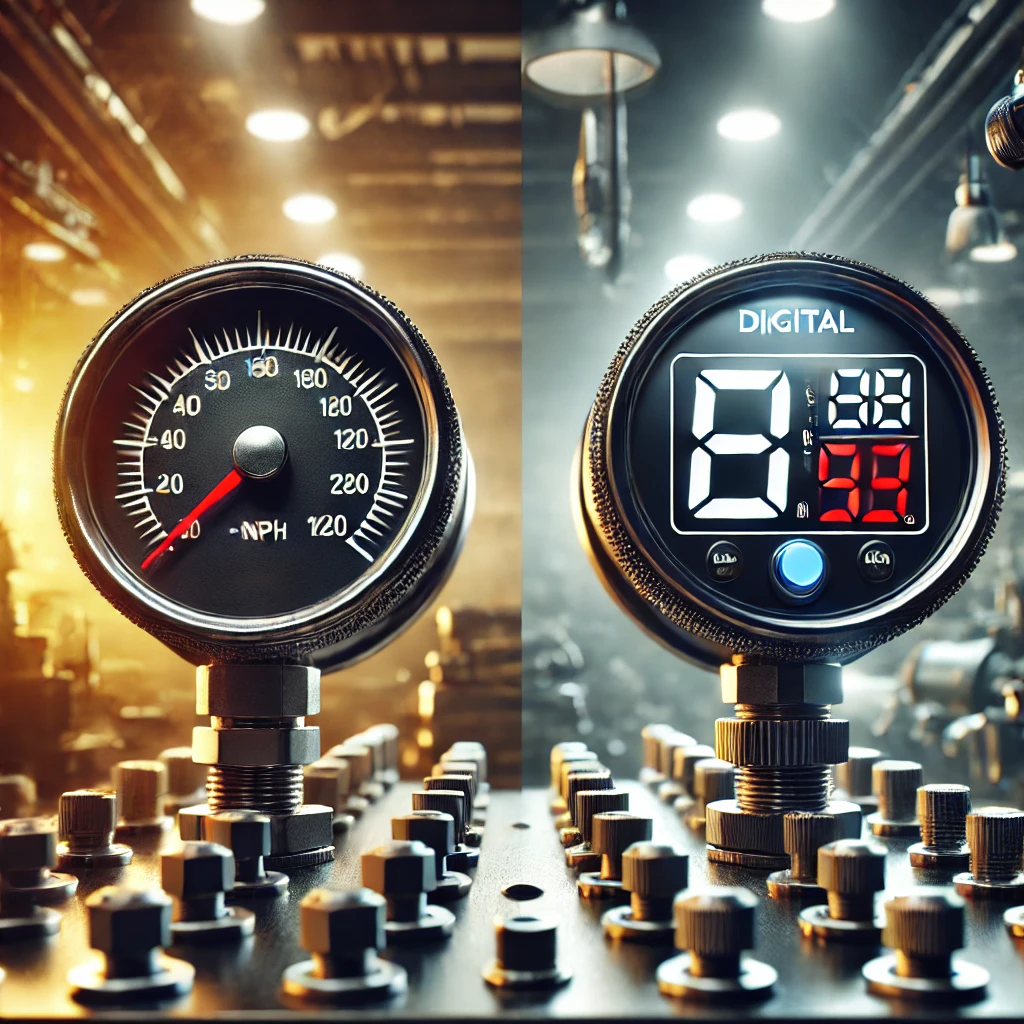Gauges are important measuring and display instruments across many sectors of the economy, be it for pressure, temperature, or speed. While choosing between analog vs digital gauges, one needs to consider certain factors like accuracy, readability, durability, and suitability. Differentiating between industrial analog gauges and consumer gauges is extremely important for accuracy in measurements.
Analog Gauges
Also referred to as dial gauges, analog gauges have been the first choice selection in measuring tools for over a century and continues to remain so. A needle connected to mechanical devices moves over a scale to indicate the measured value.
Advantages of Analog Gauges:
- Simple and Dependable: Analog gauges are simplistic tools that do not require power sources and can be relied upon in spaces without electricity.
- Real-Time Monitoring: The never-ending movement of the needle helps develop an intuitive benchmark of trends and rate shifts, which is crucial in monitoring dynamic systems.
- Economically Advantageous: On average, analog gauges are cheaper to both utilize as well as maintain making them an economically viable option.
Disadvantages of Analog Gauges:
- Restricted Accuracy: The accuracy of analog gauges is constrained by the resolution of the scale and potential parallax errors during reading.
- Mechanical Deterioration: The moving parts are susceptible to wear, vibration, and environmental factors, which can lead to calibration drift and reduced lifespan.
- Insufficient Sophisticated Features: Without employing intricate mechanisms, data logging, alarms, and unit conversion cannot be included in functional features of analog gauges.
Digital Gauges
Now, with the development of technology, digital gauges are the most frequently employed types of gauges. They measure parameters using electronic sensors and display the results on a screen as numbers.
Advantages of Digital Gauges:
- High Degree of Accuracy and Precision: Digital gauges often take the lead in providing readings with extreme precision that extends to multiple decimal places, which helps eliminate human error.
- Enhanced Durability: Digital gauges are less vulnerable to breakages due to the absence of numerous mechanical parts. They are more suited for severe environments – including chemicals and extreme temperatures.
- Advanced Functionality: Digital gauges offer features like data logging, customizable alarms, display of many units, and connection to other devices for further data processing.
Disadvantages of Digital Gauges:
- Power Dependence: Batteries or external sources are necessary for digital gauges which can be a disadvantage in certain situations.
- Higher Initial Cost: Digital gauges cost more than analog gauges which could be a problem, especially because they do have much longer lifespans.
- Complexity: The use of advanced features and settings may require additional training which is not easily available for analog gauges and troubleshooting may be harder.
Application Considerations
In choosing between analog and digital gauges the unique application needs should be taken into consideration:
- Environmental Conditions: For situations that experience extensive vibrations, have a lot of dirt, or high humidity sealed digital gauges would yield better results.
- Measurement Precision: Applications where extremely high precision and accuracy is a must, digital gauges are preferred.
- Data Management: The primary function of digital gauges is to support data recording and analysis, which means its functionalities overall provide benefits.
- Power Availability: There are places where power sources are non existent or unreliable. In such circumstances, analog gauges are extremely useful.
Industry Trends
The focus of the industry has been shifting towards the powerful, precision, and versatile digital gauges. However, in industries where power is difficult to come by, analog gauges do remain preferred as trusted devices for their easy and reliable function.
Conclusion
In summary, both analog and digital gauges have specific benefits and drawbacks. Choosing between the two requires weighing application needs, setting factors, accuracy levels, and financial limitations. Each aspect must be evaluated to identify the most suited gauge type that will guarantee the best results and reliability in the given context.










